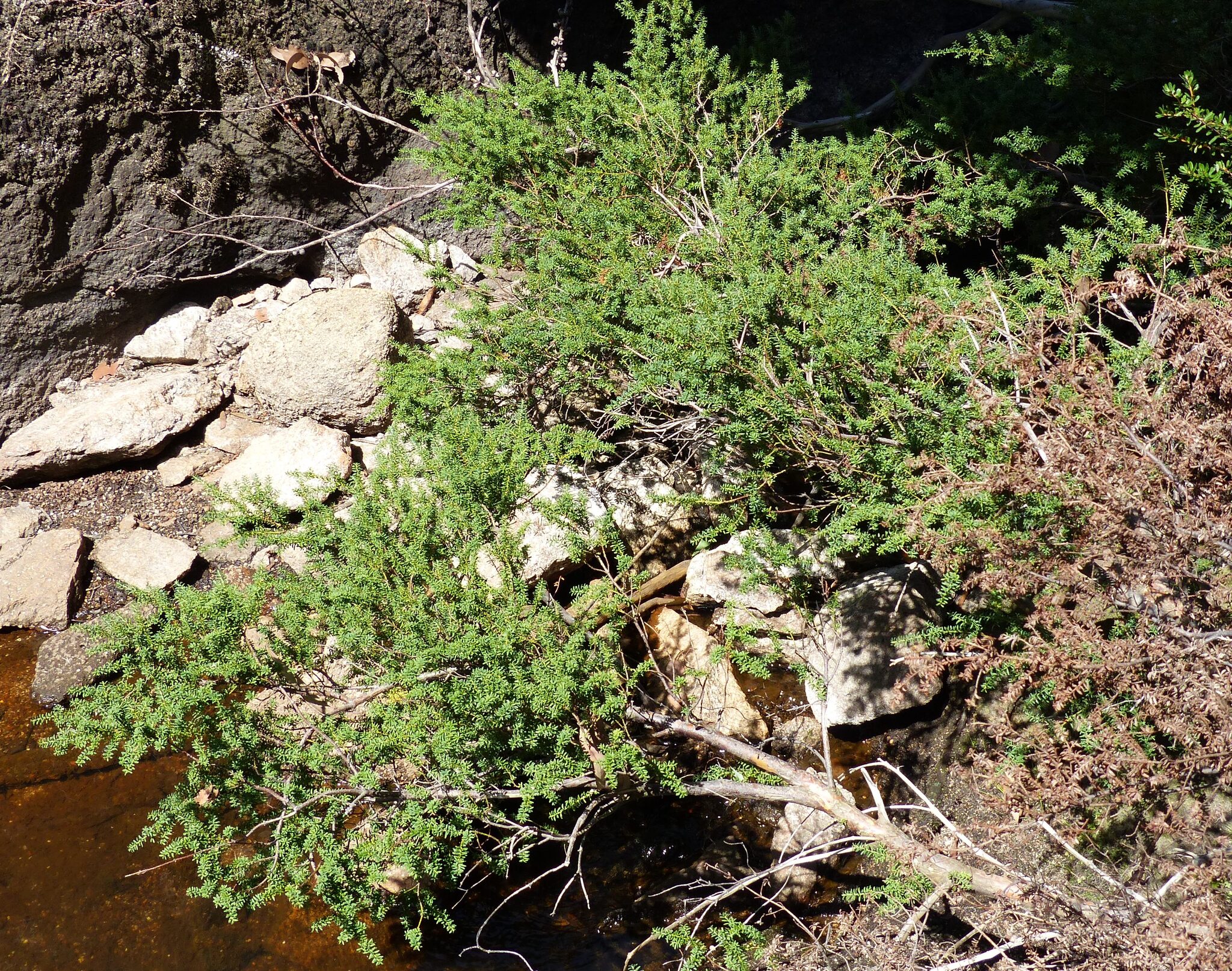
Evergreen trees or shrubs. Leaves simple, entire, spirally arranged (paired in Microcachrys), small and scale-like to large, linear or oblong (replaced in Phyllocladus by photosynthetic flattened stems called phylloclades). Plants mostly unisexual. Male cones terminal or axillary, solitary or in clusters, catkin-like with 2 pollen-sacs. Female cones terminal or axillary, consisting of few scales and forming a fleshy nut or leathery cherry-like cone with a swollen, dry or fleshy often brightly coloured stalk (receptacle) with generally only one seed maturing. Seeds sometimes with an ovuliferous scale that forms a fleshy covering (epimatium).
This is the largest and most important family of conifers in the Southern Hemisphere, growing on all southern continents except Antarctica, as well as Madagascar and the islands of Malesia and Melanesia. There are, however, relatively few species in Australia, the major centre of diversity in this region being found in alpine Tasmania. The genus Phyllocladus is sometimes placed in its own family Phyllocladaceae. The Chilean forest tree Saxegothaea conspicua Lindl., Prince Albert Yew, is occasionally offered in the nursery trade: it is remarkable for the cones of overlapping fleshy scales containing numerous seeds and unique in the Podocarpaceae for pollen grains without air bladders. The extremely rare and only parasitic gymnosperm Parasitaxus, from montane New Caledonia, has as host conifer, Falcatifolium in the same family: attempts are in progress to establish these plants in cultivation for botanical interest and research.
17 genera and about 150 species; mostly tropical and subtropical montane Southern Hemisphere, chiefly from Indo-China to the Pacific basin including Australia and New Zealand but also C America & W Indies. (Australia has 16 species in 7 genera, there being 1 species in WA and 15 species along the east coast).
Many species are the source of valuable commercial timbers. The Tasmanian Huon Pine was extensively logged for its fine-grained weatherproof timber used in furniture and boat-building and the New Zealand Rimu is also used for furniture and joinery.
Although a Southern Hemisphere family there are few established collections. A selection of genera and species in the family has been assembled at the Mount Lofty annexe of the Adelaide Botanic Gardens.
De Laubenfels (1969), Quinn (1970), Page (1988), Wells &Hill (1989).
The family exhibits three main leaf types; overlapping (imbricate) scales or needle leaves, as in Dacrydium, that often look similar to those of the Cypress; broad leaves that do not overlap, as in Podocarpus; and more rarely feathered 2-ranked leaves as found on Prumnopitys (similar to those of Taxus) and sometimes as a juvenile phase as in Dacrycarpus. Generic distinctions now place emphasis on characters of the cones, seed and receptacles in association with pollen structure, leaf anatomy and chemistry, which makes 'field' identification difficult for most of the unusual genera in cultivation. However, genera other than Podocarpus, are rarely grown.
Source: (1995). Podocarpaceae. In: . Horticultural Flora of South-eastern Australia. Volume 1, Ferns, conifers & their allies. The identification of garden and cultivated plants. University of New South Wales Press.
